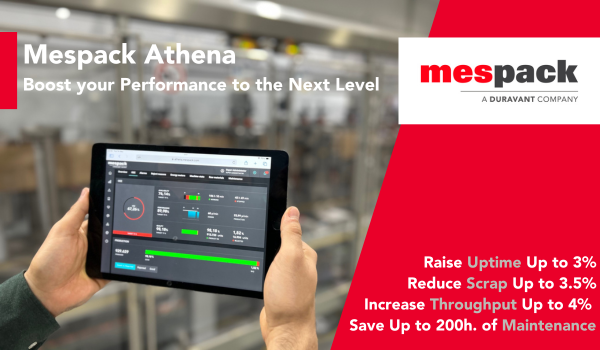Mespack innovated and modularized to best meet its customers’ needs, including a flexible Emerson Movicon. NExT HMI/SCADA to standardize its products and support future advancements
Balancing Standardization and Customization
For many mass-produced products, standardization and modularity are great ways to improve overall efficiency. However, this approach is challenged when the products must incorporate many variations.
Mespack, based in Barcelona, Spain, is an international packaging machinery manufacturer specializing in horizontal and vertical form/fill/seal, end-of-line, and water-soluble pods equipment for consumer-packaged goods (CPGs). The company serves the world’s leading brands and faces unique challenges.
“Mespack offers a wide-ranging industry product portfolio. We may supply a single machine to a customer or a turn-key solution for entire production lines. While we offer standard products, there is great customer demand for various sizes, capabilities, and other customizations, so all equipment is tailor-made,” says Adrián Mora, Product Owner at Mespack.
Modularity in Machine Design
From a mechanical standpoint, Mespack has made significant strides over the years in designing machines with modular construction. This allows them to quickly offer a variety of solutions based on proven technology.
Because the digital graphical human-machine interface (HMI) is a highly visible way that operators interact with the equipment, it plays a key role in the overall acceptance of any machine design. Mespack’s design team needed to select an HMI software platform that provided significant design flexibility, modern visualization, extensive connectivity, and the ability to scale and address future needs—just as modular as their mechanical approach.
Taking a Closer Look at the HMI
Over the years, the Mespack design team became well-acquainted with various HMIs. Some products were standalone, while others could be networked as larger supervisory control and data acquisition (SCADA) systems. They knew what worked and held strong opinions about how an HMI/SCADA platform would need to support their efforts for current and future equipment.
A primary consideration for selecting a new standard HMI/SCADA was that it needed to use scalable vector graphics to deliver a modern look and feel like any contemporary web experience. However, any HMI/SCADA platform encompasses more than just a striking outward appearance, so the Mespack team created a list of other must-have features.
Key Features for an Effective HMI/SCADA
Some of those requirements included graphical elements, objects, and library support, including both standard and user-developed objects—through an easy-to-use integrated development environment, promoting consistency and rapid configuration by developers.
“A user-centered interface readily adopted and understood by all levels of their customers’ staff. Support for creating configurations is based largely on the ISA101 human-machine interface standard, but with the ability to add new and specific functionalities to help users operate the machines,” Mora explains.
Comprehensive multi-driver communications were also critical so the platform could interact with any target OT-located PLC or intelligent device, as well as any higher-level IT computing resources.
“Advanced capabilities—such as scripting for sophisticated functions, and 21 CFR Part 11 electronic records/signatures compliance for regulated applications—were also essential,” Mora concludes.










